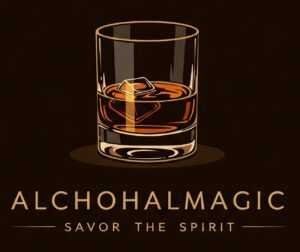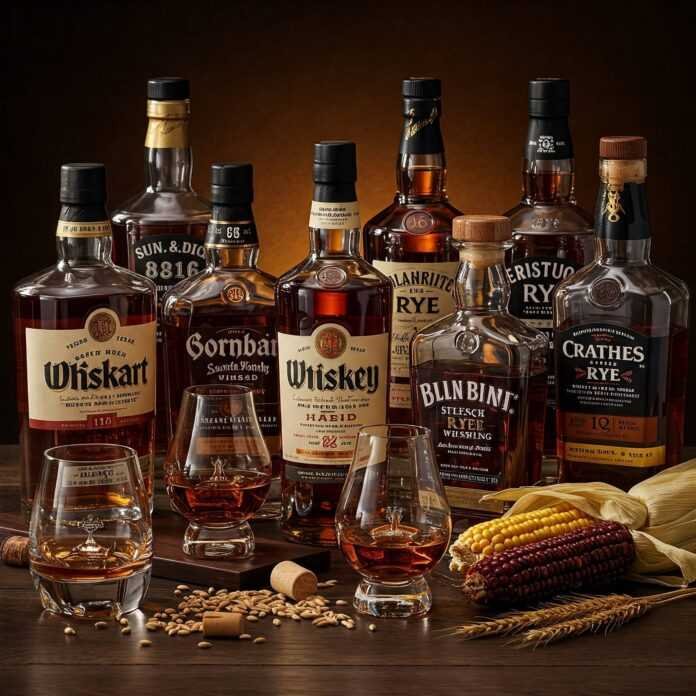Yeah, I’ve been there. More times than I’d like to admit. Because understanding Scotch vs Whiskey vs Bourbon feels like cracking some ancient code, right whiskey types?
I’ve been rambling on this internet thing for a while now – probably a few hundred blog posts under my belt. Some were absolute gems, some were… well, let’s just say they taught me valuable lessons. But the ones people really seemed to dig? The ones where I just spill the tea, or in this case, the truth about something that seems intimidating but is actually super cool once you get the hang of it. Because who hasn’t felt that awkward silence when trying to sound knowledgeable about spirits? So, grab a glass of water (hydration, people!), settle in, because I’m about to take you on a completely unpretentious, utterly relatable journey through the delicious, oak-aged world of brown spirits. And yeah, it’s going to be a bit of a ramble, just like that one time I tried to explain NFTs to my grandma.
My Journey into the Brown Bottle: From “Yuck” to “Oh, Hello There!”
You know, for the longest time, my relationship with whiskey was, shall we say, strained. My only real experience was that one regrettable college party where someone forced me to do a shot of something that tasted like lighter fluid mixed with bad decisions. I just wrote off all brown spirits as “gross.” I felt super justified, like I was protecting my delicate palate. My friends would sip their dark liquids with serious expressions, and I’d be over there with a brightly colored, overly sweet cocktail.

Then, one fateful evening, I was at a friend’s place. My friend, Mark, who’s annoyingly sophisticated about these things, poured me a tiny sip of something. “Just try it,” he said, with that infuriatingly calm confidence. “It’s a Bourbon. From Kentucky.” I took a hesitant sniff. It smelled… sweet? Like vanilla? Then a tiny sip. And holy moly, it was smooth. It was warm. It tasted like caramel and toasted marshmallows. My entire world, or at least my beverage-snob world, shifted. It was kinda like that time back in 8th grade when I wore two different shoes to school. Not on purpose. It was a Monday. And that, my friends, is how I feel about discovering the good brown spirits – a little unexpected, a little mismatched from my preconceived notions, and utterly delightful.
Suddenly, the floodgates opened. I started trying different things. Sometimes I’d get a total dud, something too smoky, too peaty, or just too… much. But then I’d hit on another gem. And I realized that this whole Scotch vs Whiskey vs Bourbon thing wasn’t about being fancy, it was about finding what you actually like. And to do that, you gotta know the basics. So, let’s break it down, simple as pie (apple pie, probably, with a little bourbon in it).
Whiskey: The Big Umbrella (with a little ‘e’)
Okay, first things first: “Whiskey” (with an ‘e’ if you’re in the US or Ireland, often without if you’re in Scotland or Canada, but let’s not get too pedantic yet) is the big, big category. It’s like “fruit.” You wouldn’t just say “I like fruit,” right? You’d say “I like apples” or “I like bananas.” Whiskey is the general term for a spirit distilled from fermented grain mash and aged in wooden barrels.
That’s it. That’s the core definition. Everything else comes down to where it’s made, what grains are used, and how it’s aged. Think of it as the family name, and Scotch, Bourbon, Irish Whiskey, Canadian Whisky, Japanese Whisky, etc., are all the different family members with their own quirks and personalities.
Scotch: The Smoky, Sophisticated Cousin (No ‘e’ allowed!)
Alright, let’s talk Scotch. When someone says “Scotch,” they’re talking about whisky made in Scotland. Period. No arguments. If it ain’t from Scotland, it ain’t Scotch. End of story.
What Makes Scotch, Scotch?
- Geography, Duh: Has to be made in Scotland. The climate, the water, the traditions – it all plays a role.
- Grain: Made primarily from malted barley (though some Scotch can include other grains).
- Aging: Must be aged in oak casks in Scotland for a minimum of three years. Three years! That’s, like, a whole presidency!
- Proof: Bottled at a minimum of 40% ABV (80 proof).
- No Additives (Mostly): No added flavors allowed, just water and sometimes caramel coloring (for consistency, not flavor).

Types of Scotch: It’s Not All Peat!
This is where people get intimidated. Scotch isn’t just one thing. Oh no, my friend.
- Single Malt Scotch: This is the fancy one. Made from 100% malted barley, at a single distillery. Think of it as a solo artist – expressing the unique character of that one place. These are often the ones people talk about with notes of “sea brine” or “campfire.”
- Blended Malt Scotch: A blend of single malts from different distilleries.
- Single Grain Scotch: Made at a single distillery, but from grains other than (or in addition to) malted barley.
- Blended Grain Scotch: A blend of single grain whiskies from different distilleries.
- Blended Scotch: This is the most common type you’ll find (think Johnnie Walker, Chivas Regal). It’s a blend of both single malt and grain whiskies from various distilleries. This allows master blenders to create a consistent flavor profile year after year.
- For a super visual and slightly nerdy guide, check out this infographic on the differences between whiskeys. It’s awesome for quick comparisons.
What Does Scotch Taste Like?
This is the big question! It varies WILDLY.
- Smoky/Peaty: This is what most people think of. It comes from drying the malted barley over peat fires. Some are like a roaring bonfire (Laphroaig), others just a wisp of smoke.
- Fruity: Think apples, pears, dried fruits.
- Floral/Grassy: Light, delicate notes.
- Honey/Vanilla: From the oak barrels.
- Salty/Briny: Especially coastal scotches.
My first “good” Scotch was a Highland Park, which had this lovely balance of sweet and a hint of smoke. It totally blew my mind. Before that, I thought Scotch was just for old dudes in tweed jackets. I should probably be embarrassed, but honestly? That’s one of my favorite memories.
Bourbon: America’s Sweetheart (A True Blue US Spirit)
Now, let’s hop across the pond to our own backyard. Bourbon. This is America’s native spirit. And let me tell you, there are some rules to being Bourbon. Like, strict rules.
What Makes Bourbon, Bourbon?
- Place of Origin: Must be made in the United States. While most is from Kentucky (and they’ll fight you if you say otherwise), it doesn’t have to be.
- Mash Bill: This is crucial! The grain mixture (mash bill) must be at least 51% corn. The corn gives it that signature sweetness. The rest is usually rye, barley, or wheat.
- Aging: Must be aged in new, charred oak barrels. This is a HUGE flavor contributor. “New” means it can only be used once for Bourbon. “Charred” means the inside of the barrel is burned, which helps activate the sugars in the wood and adds color and flavor.
- Distillation Proof: Distilled to no more than 160 proof (80% ABV).
- Barrel Entry Proof: Must enter the barrel for aging at no more than 125 proof (62.5% ABV).
- Bottling Proof: Bottled at a minimum of 80 proof (40% ABV).
- No Additives: No coloring or flavoring can be added. What comes out of that new charred barrel is what you get!

What Does Bourbon Taste Like?
Generally, Bourbon is known for being sweeter and fuller-bodied than Scotch.
- Sweetness: Caramel, vanilla, brown sugar, honey (from the corn and charred oak).
- Fruity: Dried fruit, cherry, apple.
- Spicy: Cinnamon, nutmeg, pepper (especially if it has a high rye content).
- Oak/Woody: Toasted nuts, sometimes a hint of leather or tobacco.
My first love was Maker’s Mark, with its soft, wheated profile. It was like a warm hug. Then I tried something with more rye, and it was a revelation – suddenly a little spicy kick! It’s kinda wild how much range there is, even within one category.
A Quick Word on “whiskey types” (The American Kind)
Sometimes, you’ll see a bottle just labeled “whiskey types” or “American whiskey types” without specifying Bourbon or Rye. What’s up with that? It just means it doesn’t meet all the super-strict rules for Bourbon (like the 51% corn rule, or the new charred barrel rule). It’s still whiskey, but it has more freedom in its production. Think of it as the chill, easygoing sibling who doesn’t follow all the family rules.
Scotch vs Whiskey vs Bourbon: The Ultimate Face-Off (Which One’s For You?)
So, you’ve got the basics. Now, how do you pick? It really comes down to your personal palate.
- If you like it smoky, complex, and sometimes a little challenging (in a good way): Explore Scotch. Start with a blended Scotch (like a decent Johnnie Walker Black Label) or a lighter single malt (like a Glenmorangie or a Macallan 12).
- If you like it sweet, smooth, with notes of caramel and vanilla: Go for Bourbon. Maker’s Mark, Woodford Reserve, or Bulleit are great starting points.
- If you’re just dipping your toes in or want something versatile: Any good “Whiskey” (like Jameson Irish Whiskey – a whole other awesome category, by the way!) or a mild Canadian whisky can be a great entry point. They tend to be very smooth and easy to drink.
My Totally Unsolicited Advice for Beginners whiskey types:
- Don’t Shoot It: For the love of all that is holy, don’t just shoot good whiskey. Sip it. Let it linger. Experience it. It’s not a race!
- Add a Drop of Water: Seriously, a tiny drop of water (especially in higher proof whiskies) can “open up” the flavors and make them more approachable. It’s like magic!
- Try It Neat, Then with Ice: Always try a sip neat first to get the pure flavor. Then add a large ice cube (melts slower, less dilution) if you prefer it chilled.
- Don’t Be a Snob: Who cares if someone else thinks their 25-year-old single malt is superior to your favorite affordable Bourbon? Drink what you like. This isn’t a competition, it’s about enjoyment.
- Small Bottles First: Many liquor stores sell smaller “mini” bottles or 375ml bottles. Great for trying before you commit to a whole big expensive bottle.
- Find a Good Bar: A bar with a knowledgeable bartender can be a fantastic resource. Tell them what flavors you like, and they can often guide you.
You ever feel like that? Like, you learn a little bit about something, and suddenly a whole new world opens up? Is it just me? Because that’s exactly how I felt diving into Scotch vs Whiskey vs Bourbon. It turned what felt like a scary, intimidating choice into a fun, delicious exploration.
Want to Dive Deeper?
- And for some truly hilarious and relatable stories about the drinking experience, check out The Bourbon Review blog – they often have great, approachable content.










































